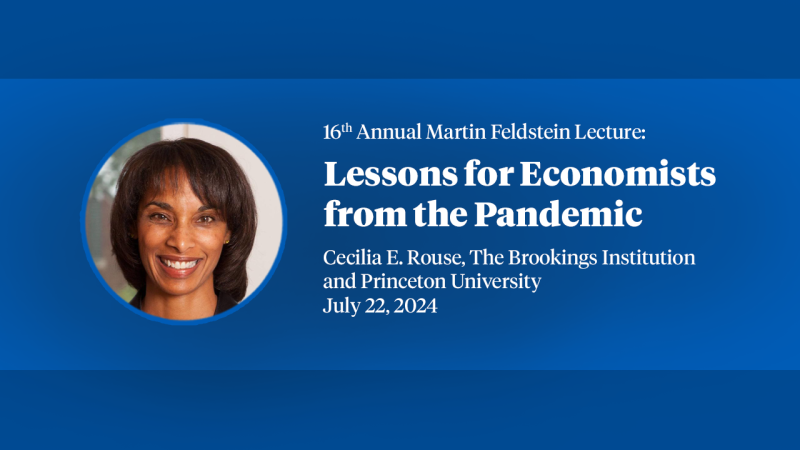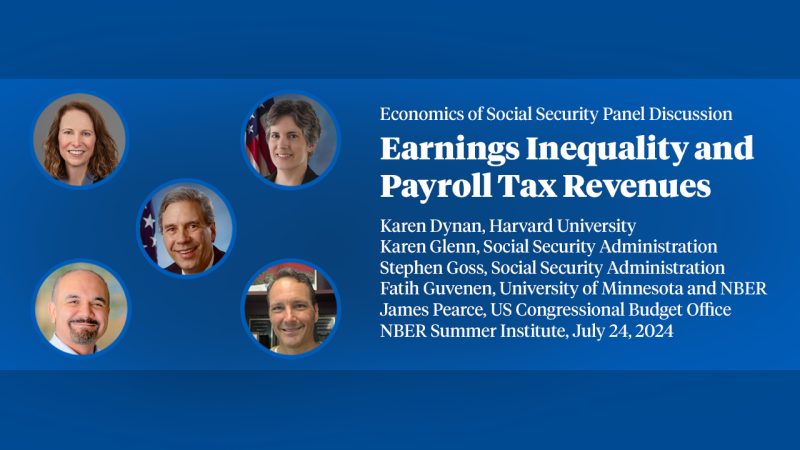The Economics of Crime and the Criminal Justice System
My recent empirical research focuses on crime and the criminal justice system. Within this broad area, three primary themes emerge: identifying the causal link between criminal justice policies and crime rates; differentiating empirically between deterrence and incapacitation; and using nonstandard data sources to test economic theories. This synopsis of my research is organized around these themes.
Identifying the Causal Link Between Criminal Justice Policies and Crime Rates
Differentiating between correlation and causality is critical when analyzing the impact of crime policies. For instance, Newark has a violent crime rate four times higher than that of Omaha, and it also has twice as many police per capita. A likely explanation for this relationship, however, is that high crime rates lead cities to hire more police, not that police cause crime. Similarly, when crime is rising, prison populations also tend to rise. This is not surprising: if criminals continue to be caught and punished at a constant rate, then the prison population should mechanically rise one-for-one with the crime rate. From the perspective of ideal public policy, reliance on such correlations provides no guidance. Identifying the causal link between increases in police and the number of prisoners and crime is necessary.
I have examined the impact of police on crime, using the timing of mayoral and gubernatorial elections as "instruments" for changes in the police force.(1) Indeed, the size of the police force appears to be affected by election timing. Over a 25-year period, the average increase in the size of the police force in large U.S. cities in mayoral election years was 2 percent; in gubernatorial election years it was 2.1 percent, and in nonelection years there was no change. It appears that incumbent politicians attempt to bolster their re-election prospects by appearing "tough on crime." If elections do not otherwise affect crime rates (after controlling for other factors that may be influenced by elections, such as changes in the local economy), then electoral cycles may plausibly influence changes in the police force. In one set of estimates, I find a positive relationship between police and crime. But when I include elections in the analysis the significantly reduce crime.
In a related paper, I consider the relationship between the number of prisoners and crime rates.(2) In this paper, I use prison overcrowding lawsuits as an indicator of change in prison populations. These lawsuits affect prison populations, but they may be otherwise unrelated to crime rates (especially because the cases often take a decade or more to be resolved). In 13 states, lawsuits brought by the American Civil Liberties Union have affected a states entire prison system. In the three years after a final decision was handed down by the courts in those cases, prison populations fell by 14.3 percent compared to the population of the nation as a whole, whereas violent and property crime rates increased 10.2 percent and 5.5 percent respectively. Using my estimate of the elasticity of crime with respect to the prison population and previous estimates of the costs of crime from Miller, Cohen, and Rossman, I cannot reject the possibility that the marginal social co inal social benefit of the reduction in crime.(3)
Deterrence, Incapacitation, and the Response of Criminals to Incentives
Becker's well-known economic model of crime is based on deterrence: potential criminals alter their behavior in response to changing incentives.(4) Empirically, however, it is often difficult to distinguish between deterrence (which is a behavioral response) and incapacitation (in which reductions in crime are attributable solely to criminals being unable to commit crimes because they are locked up). Virtually all of the empirical work that purportedly supports the economic model of crime is equally consistent with incapacitation. In some cases, such as determining the impact of policies like "three strikes and you're out" laws, the distinction is critical. If deterrence is the operative force, then "three strikes" laws are likely to be effective; if only incapacitation is at work, then "three strikes" laws will lead to a geriatric, cost-ineffective prison population. Three of my papers thus have attempted to distinguish between
In one, I note that both deterrence and incapacitation predict that changes in the expected punishment for one crime (burglary, for example) will lead to a decrease in that crime.(5) Thus, this prediction cannot be used to distinguish between deterrence and incapacitation. In contrast, the two theories of crime make different predictions as to what will happen to a second crime (auto theft, for example) when the expected punishment for burglary rises. Deterrence predicts that criminals will substitute auto theft for burglary. Incapacitation, on the other hand, suggests that levels of both crimes will fall. Exploiting this insight empirically seems to show that deterrence is more important than incapacitation, particularly for property crime.
Daniel Kessler and I exploit a unique feature of sentence enhancements to isolate deterrence.(6) We look at the passage of Proposition 8 in California, which selectively institutes sentence enhancements for some crimes. Sentence enhancements are additional penalties tacked on to a base sentence (as a result of, for instance, past criminal history or use of a weapon). Since the enhancement increases the expected punishment, it will increase deterrence. Because it is added on to an existing punishment, however, it will not affect incapacitation until the base sentence expires. Thus, any immediate effect of a newly instituted sentence enhancement law must result from deterrence. We find an immediate, sharp decline in eligible crimes relative to those that are unaffected by the law, again suggesting the importance of deterrence.
Finally, I study the relationship between crime and punishment for juveniles.(7) Over the last two decades, juvenile crime has grown at a much faster rate than adult crime. During that same period, the adult prison population has grown dramatically, but the number of juveniles in custody has not. I estimate that changes in relative punishment can explain 60 percent of the differential growth rates in juvenile and adult crime over the period I examine. Moreover, sharp changes in criminal involvement with the transition from the juvenile to the adult court suggest that deterrence, rather than simply incapacitation, plays an important role.
Using Nonstandard Data Sources to Test Economic Theories
The study of crime offers many opportunities to test microeconomic models of behavior. Often, however, standard data sources are not appropriate for such tasks. Consequently, a number of projects with which I have been involved in recent years have relied on unusual data sources.
Ian Ayres and I consider what externalities are associated with potential victims taking precautions.(8) In particular, we look at Lojack, a radio transmitter device hidden inside automobiles (the Lojack company provided proprietary market share data). There is no external indication on the vehicle that Lojack is installed. Thus, Lojack provides general deterrence, even to vehicles without it. This is in stark contrast to observable devices, such as "The Club," that presumably cause crimes to shift from one vehicle to another. We find sharp decreases in auto theft in cities where Lojack becomes available. Further, car owners who install Lojack internalize only 10 percent of the total social benefit, leading to underprovision of Lojack by the market, we conclude.
Sudir Venkatesh and I use an even more unusual data source: financial records kept over a four-year period by a drug-selling street gang.(9) These include information on the price and quantity of drugs sold; wages at various levels of the organization; and expenses such as tribute, weapons, and so on. We supplement the financial information with ethnographic observations and data on arrests, deaths, and injuries. Wages appear to be surprisingly low, not much above the federal minimum wage for street-level sellers. The distribution of wages within the gang is extremely skewed, though, and there is some evidence of compensating differentials in wages. During the time period we study, the gang expands its territory, providing a number of tests of market power and pricing. Among other results, we find that gangs price below marginal cost during gang wars.
1. S.D. Levitt, "Using Electoral Cycles in Police Hiring to Estimate the Effect of Police on Crime," American Economic Review, 87(3), (June 1997), pp. 270,90.
2. S.D. Levitt, "The Effect of Prison Population Size on Crime Rates: Evidence from Prison Overcrowding Litigation," Quarterly Journal of Economics, 111, (May 1996), pp. 319,52.
3. T. Miller, M. Cohen, and S. Rossman, "Victim Costs of Violent Crime and Resulting Injuries," Health Affairs, 12, (Winter 1993), pp. 186,97.
4. G. Becker, "Crime and Punishment: An Economic Approach," Quarterly Journal of Economics, 76, (March/April 1968), pp. 169,217.
5. S.D. Levitt, "Why Do Increased Arrest Rates Appear to Reduce Crime: Deterrence, Incapacitation, or Measurement Error?" Economic Inquiry, forthcoming.
6. D. Kessler and S.D. Levitt, "Using Sentence Enhancements to Distinguish Deterrence from Incapacitation," NBER Working Paper No. 6484, March 1998.
7. S.D. Levitt, "Juvenile Crime and Punishment." Journal of Political Economy, forthcoming.
8. I. Ayres and S.D. Levitt, "Measuring the Positive Externalities from Unobservable Victim Precaution: An Empirical Analysis of Lojack," Quarterly Journal of Economics, 113(1), (February 1998), pp. 43,77.
9. S.D. Levitt and S. Venkatesh, "An Economic Analysis of a Drug-Selling Gang's Finances," NBER Working Paper No. 6592, June 1998.


